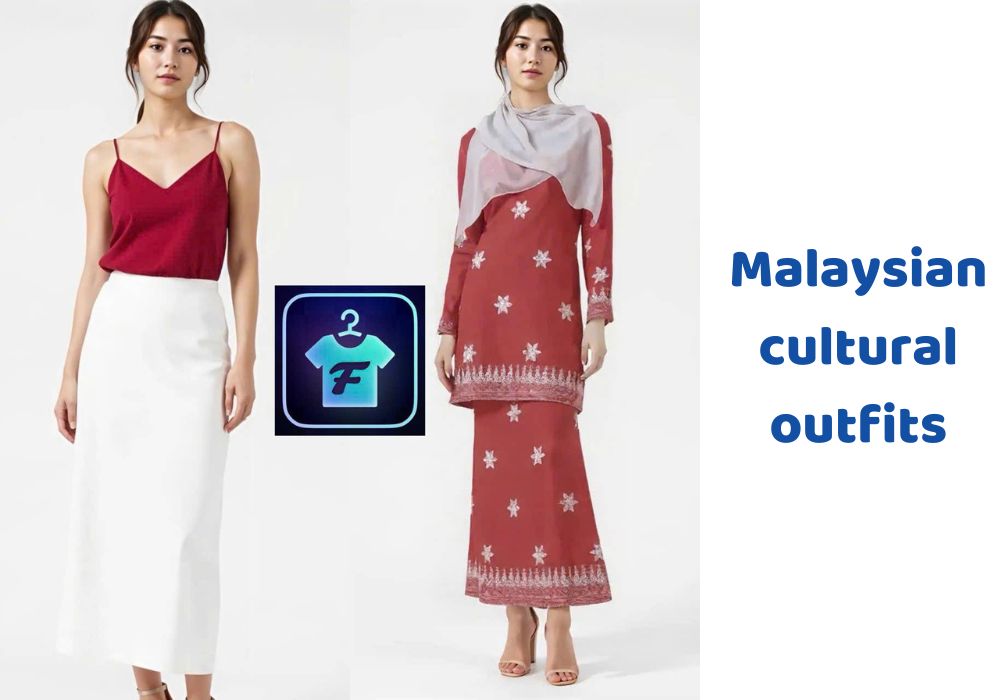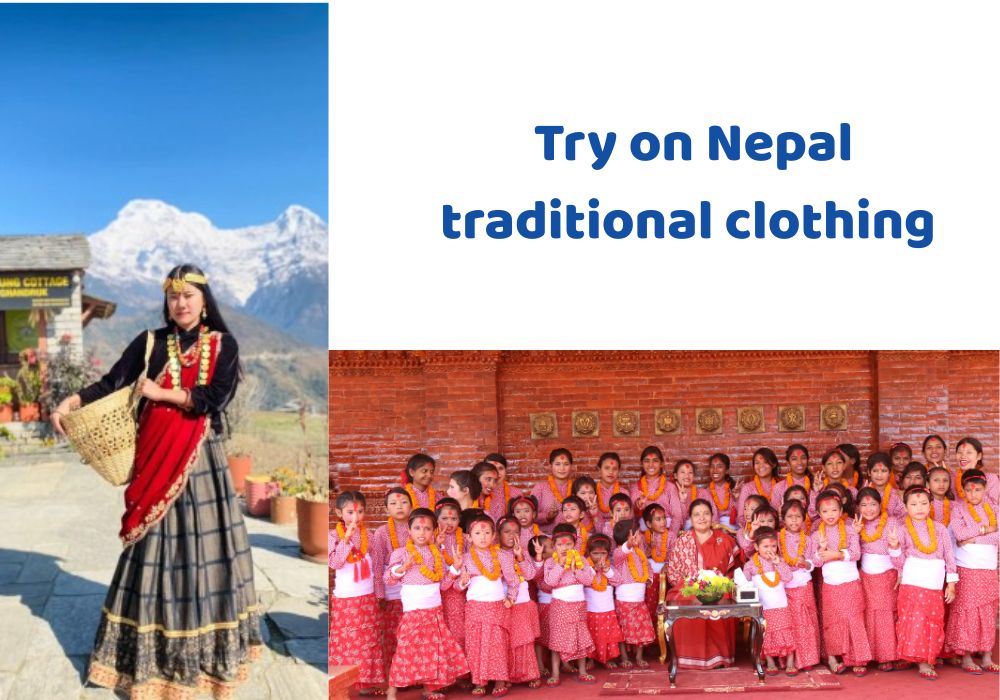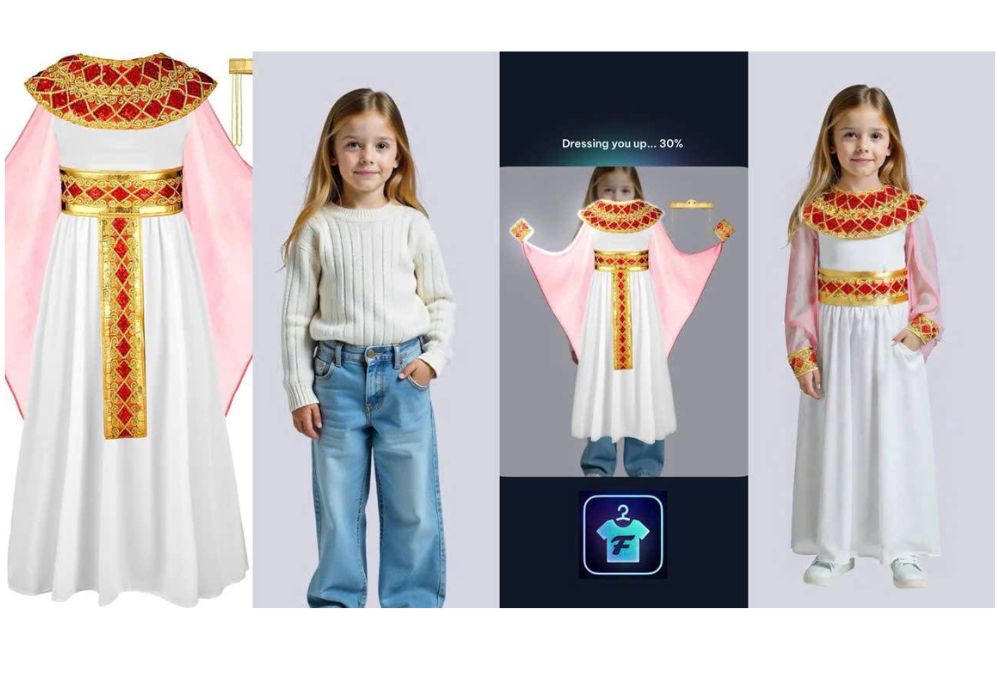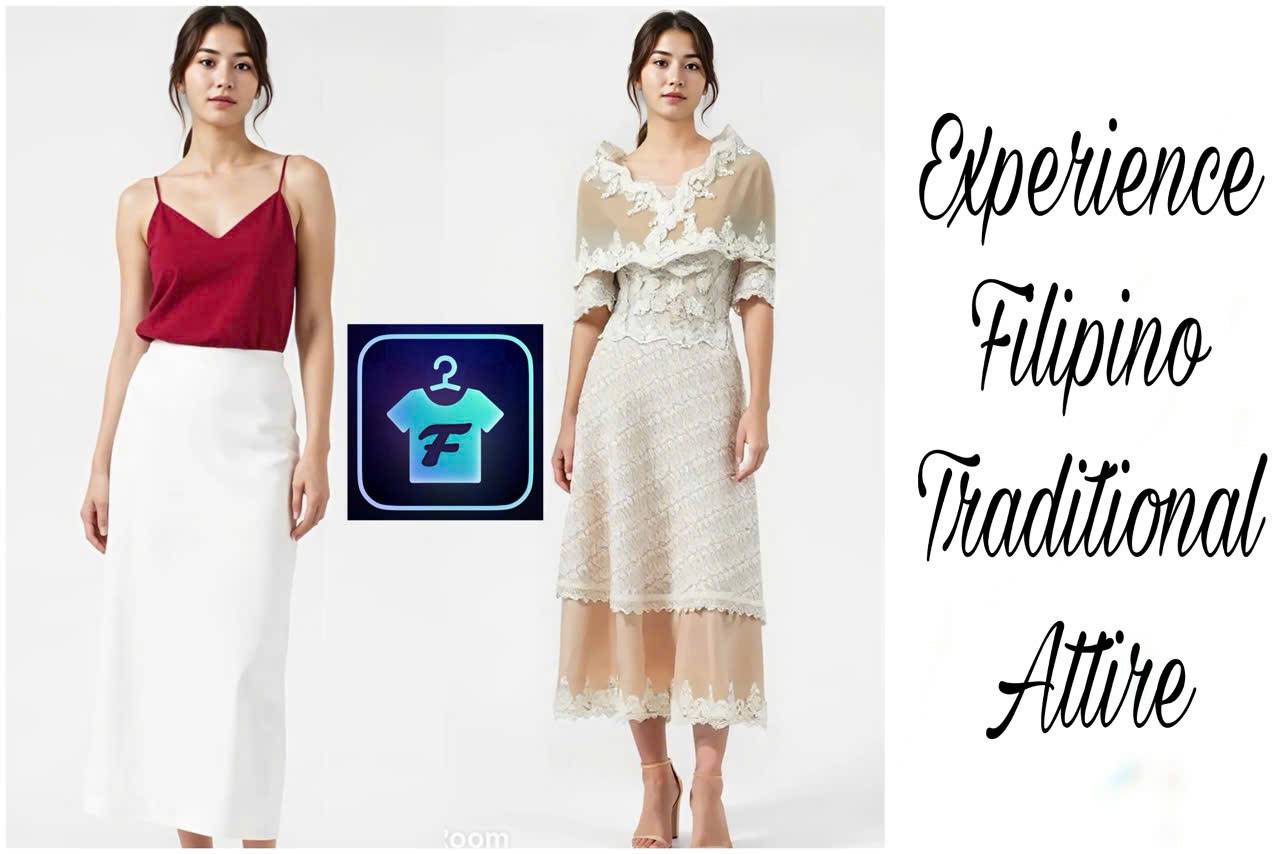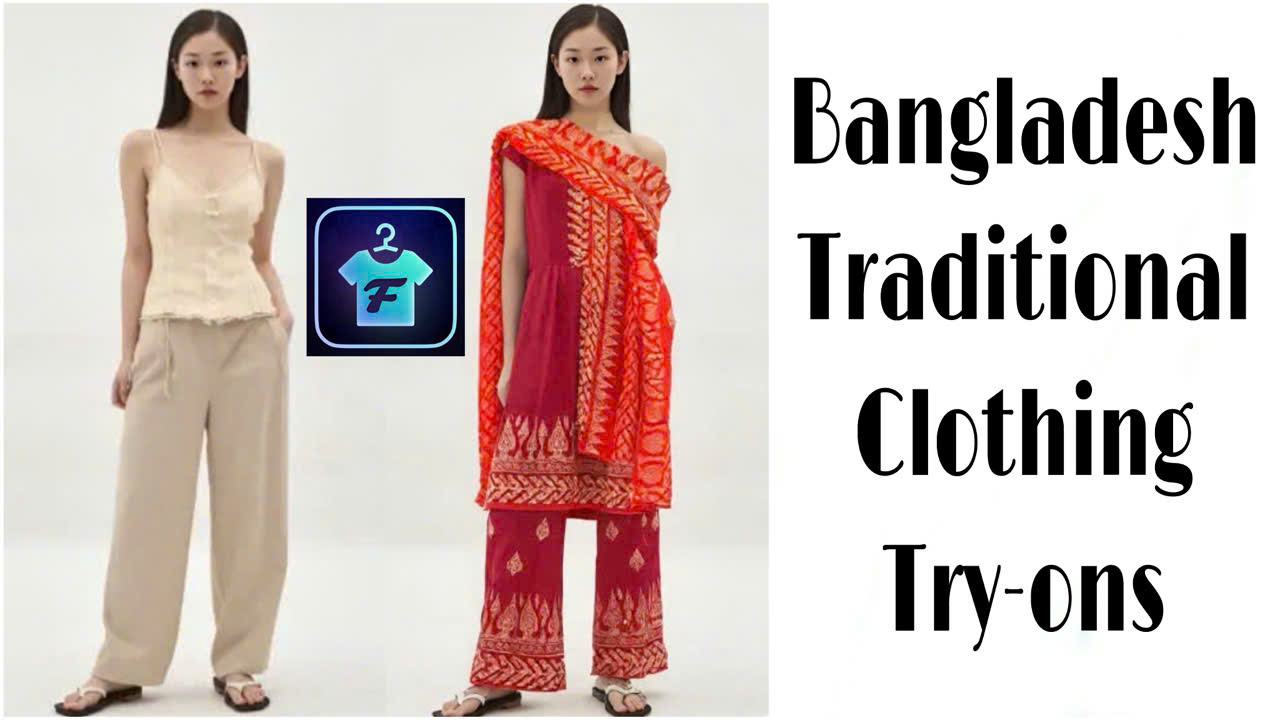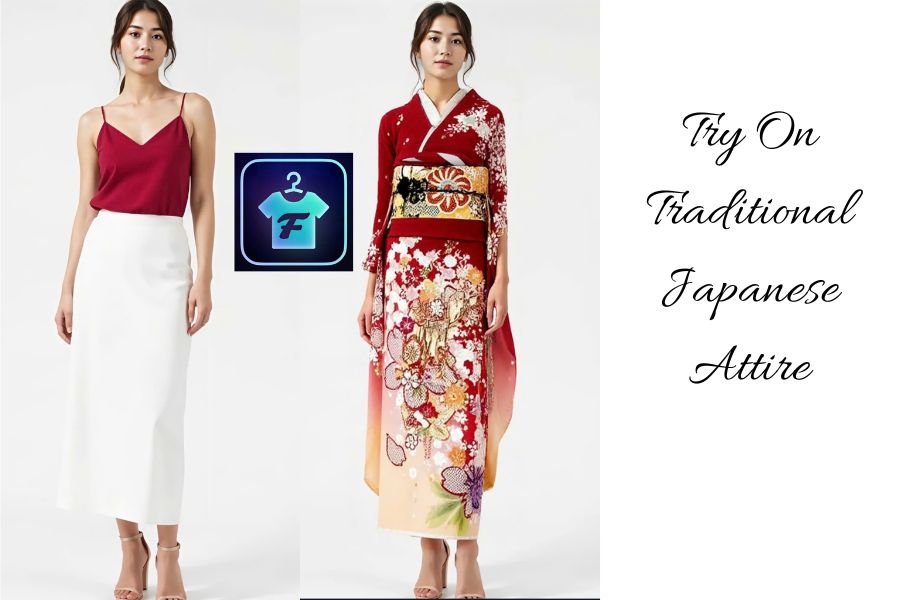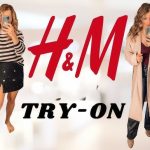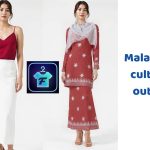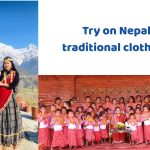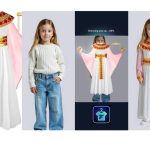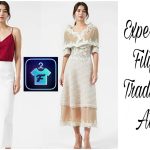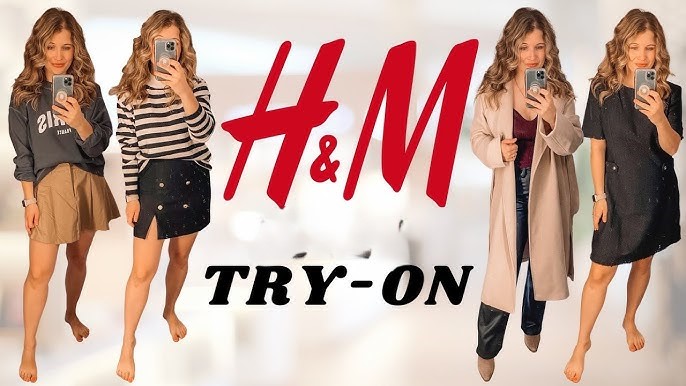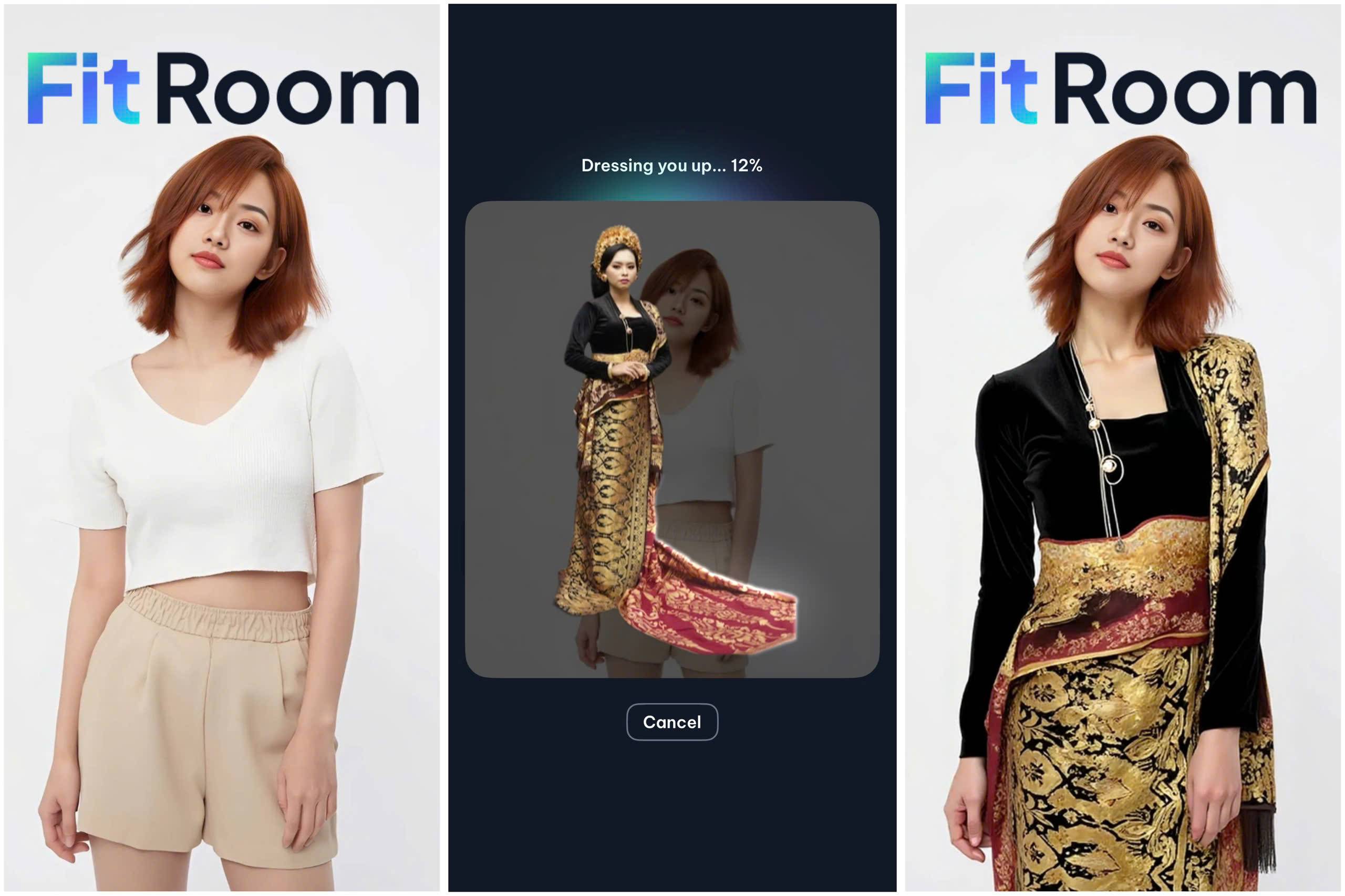When it comes to Korean fashion, it’s not just the latest K-drama looks or K-pop stage outfits that steal the spotlight – hanbok (한복), Korea’s traditional attire, has been turning heads for centuries.
But let’s be real – finding the perfect hanbok, trying it on, and making sure you don’t trip over the voluminous fabric? That’s a whole adventure on its own. Luckily, there’s a way to embrace the beauty of Korean tradition without stepping foot into a dressing room.
Let’s dive into the world of hanbok and see how FitRoom makes the experience fun, stylish, and oh-so-easy.
The story behind Korea’s iconic traditional clothing
Hanbok (한복) is the heart and soul of Korean traditional fashion, known for its vibrant colors, flowing silhouettes, and rich cultural significance. While it was once everyday attire for men and women of all social classes, today, hanbok is primarily reserved for special occasions such as Chuseok (Korean Thanksgiving), Seollal (Lunar New Year), weddings, and traditional ceremonies.
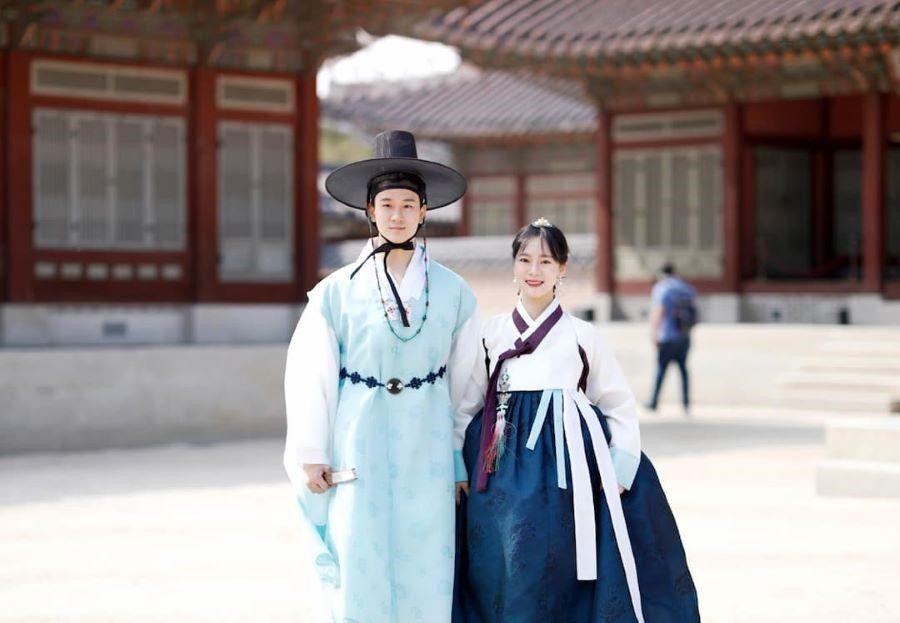
In traditional times, hanbok colors weren’t just about fashion; they reflected a person’s social status, marital status, and even their role in society. Bright colors (red, yellow, pink, and green) were commonly worn by children and unmarried women, symbolizing youth, energy, and purity. Darker, muted tones (navy, brown, deep green) were preferred by older individuals or married women, representing wisdom and stability. Royalty and aristocrats often wore hanbok in striking shades of blue, purple, and gold – colors reserved for nobility.

Hanbok’s structure follows the natural balance of yin and yang, with its combination of flowing fabric (feminine) and strong geometric lines (masculine). The jeogori (jacket) is fitted at the top, symbolizing stability, while the chima (skirt) or baji (pants) flow freely, representing ease of movement and comfort.
A closer look at traditional Korean attire
Hanbok is not a one-size-fits-all term – it encompasses a variety of garments, each designed for specific occasions, social classes, and even seasons. From the elegant layers of a noblewoman’s attire to the sturdy garments of scholars and warriors, traditional Korean clothing reflects the country’s deep-rooted customs and artistic sensibilities.
Women’s Korean traditional dress
Women’s hanbok is designed to emphasize natural beauty, modesty, and movement. It consists of two primary components:
- Jeogori (저고리) – A short, fitted jacket with curved sleeves, secured at the chest with a ribbon called otgoreum (옷고름). The length and fit of the jeogori have evolved over time, with earlier designs being longer and looser.
- Chima (치마) – A high-waisted, full-length skirt that flows elegantly, giving the illusion of weightlessness. The chima is typically layered and pleated to create volume.
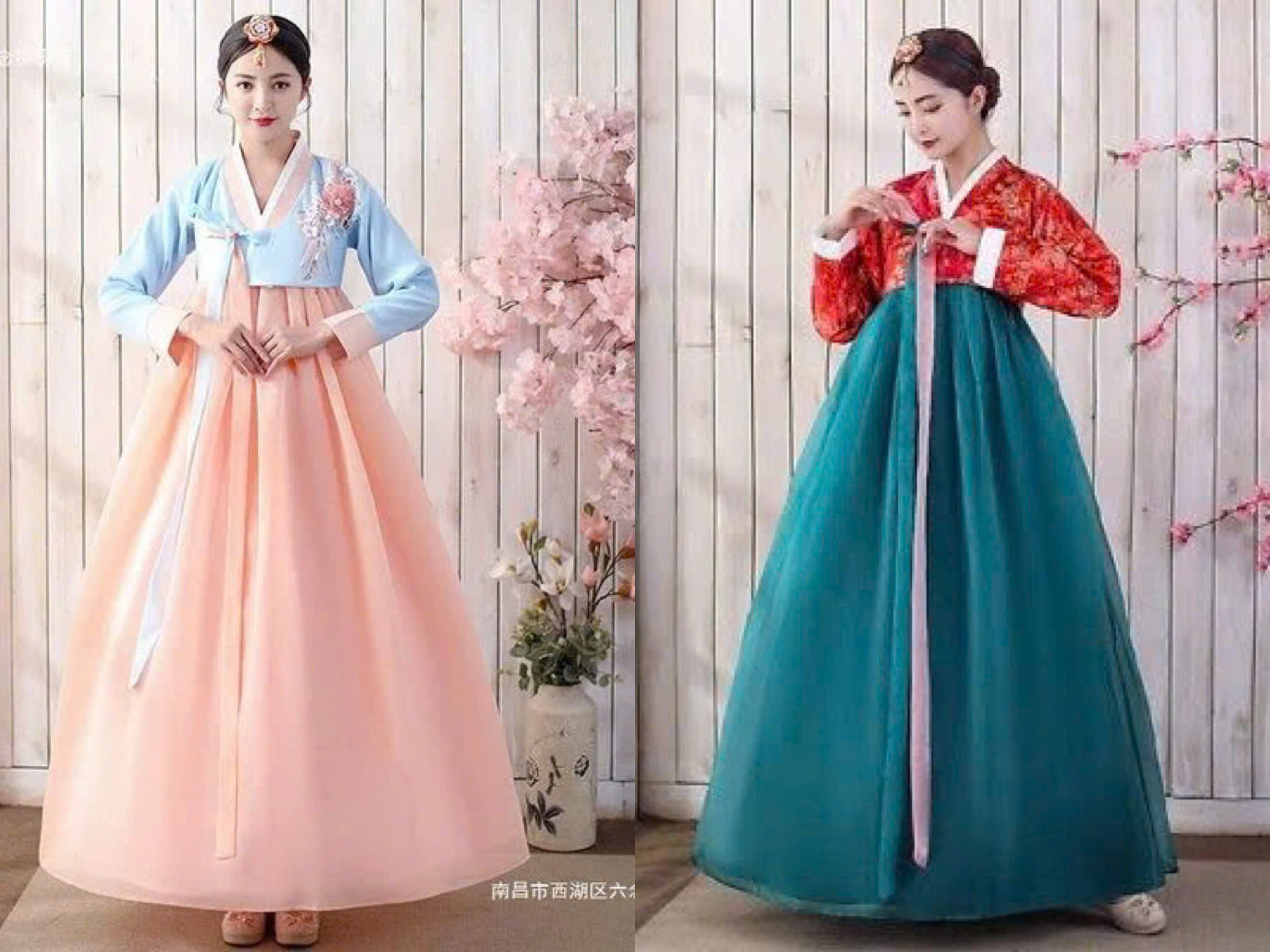
The colors of a woman’s hanbok traditionally represented age, marital status, and social standing. Bright colors were often worn by young, unmarried women, while older women preferred subdued tones. Silk, ramie, and lightweight cotton were used depending on the season, with thicker materials for winter and breathable fabrics for summer.
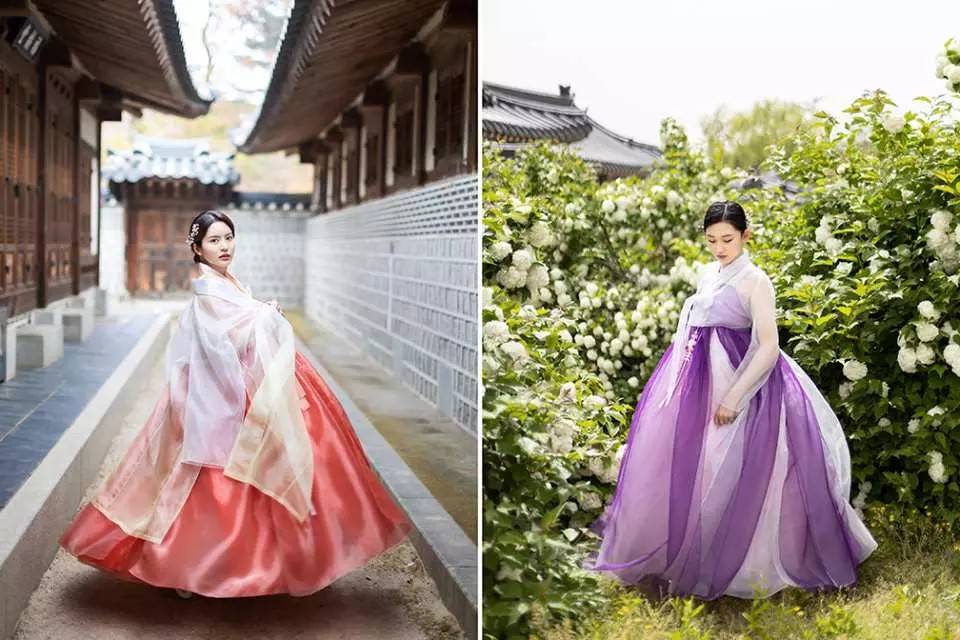
The chima’s voluminous design allowed for ease of movement and concealed the lower body, aligning with Confucian ideals of modesty. The chima is designed to give the illusion of floating as one walks, adding to hanbok’s ethereal charm.
Men’s Hanbok
Men’s hanbok is designed for practicality, movement, and elegance. It consists of:
- Jeogori (저고리): Similar to the women’s version but slightly longer and looser, allowing for better mobility.
- Baji (바지): Wide-legged, loose-fitting pants, gathered at the ankles with straps (daenim, 대님) for flexibility and comfort. The design allowed freedom of movement, essential for horseback riding and daily activities. Unlike Western-style pants, baji did not have a fixed waistband, relying instead on adjustable ties, making them one-size-fits-most
For formal events, men often wore the durumagi (두루마기), a long overcoat used for ceremonial and formal events.
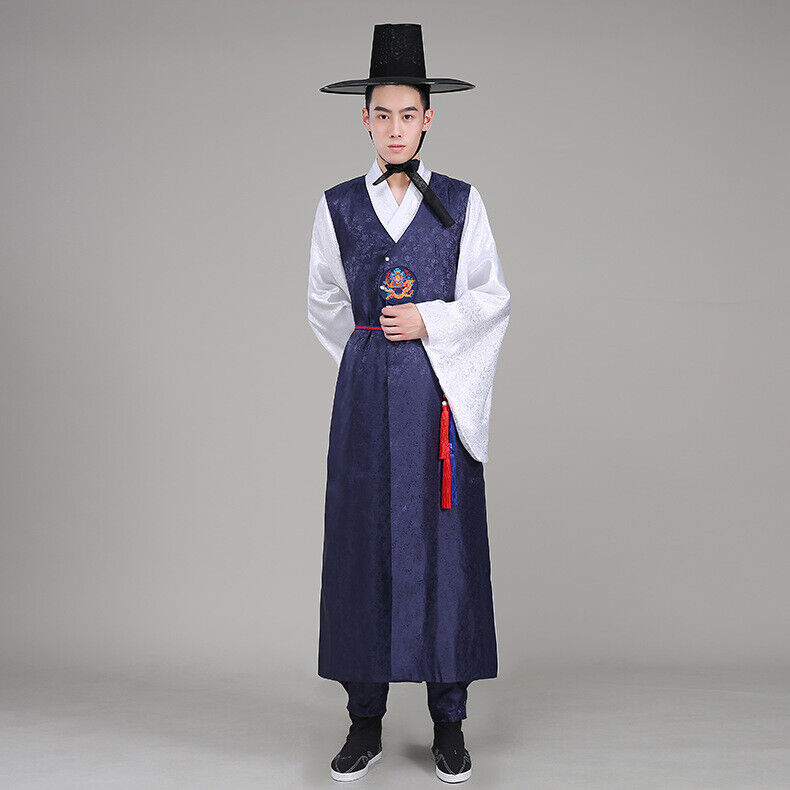
Children’s Hanbok
Children’s hanbok is extra vibrant and playful, especially on their first birthday (doljanchi), when families celebrate with a special ceremony. Baby boys often wear bokgeon – a small cap symbolizing wisdom, while baby girls wear jobawi – a decorative winter hat lined with silk.
A fun fact, families would place symbolic objects in front of the child during the first birthday ritual – whichever item the baby picked was believed to predict their future.

Special occasion hanbok
While everyday hanbok was simple and practical, ceremonial hanbok was far more elaborate and symbolic.
- Wedding Hanbok (Hwarot & Wonsam): Brides wore hwarot or wonsam – beautifully embroidered silk robes adorned with phoenix and floral motifs, symbolizing prosperity. Grooms wore a deep blue or purple robe (samogwandae).
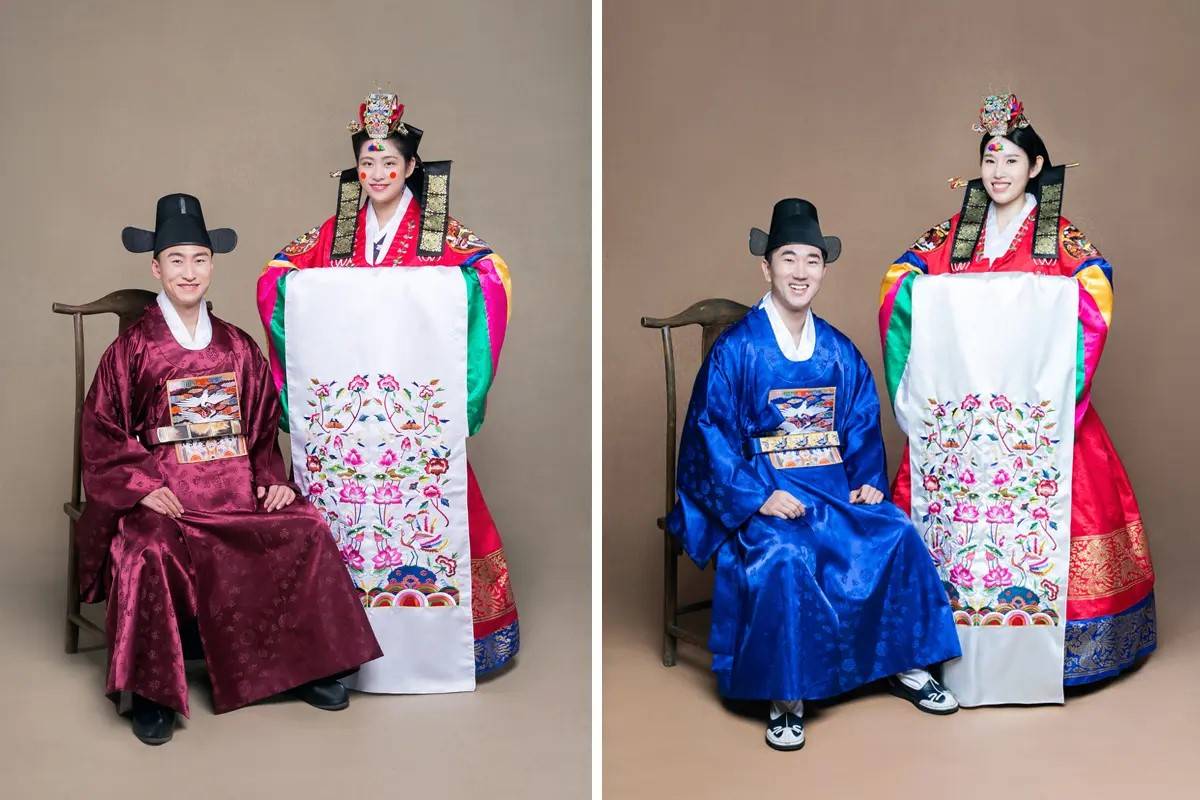
- Scholar’s attire (Gwanbok & Danryeong): Confucian scholars and government officials wore gwanbok, an outfit with structured shoulders and layered robes.
- Royal hanbok (Gonryongpo & Jeogui): Kings wore gonryongpo, an embroidered robe featuring a golden dragon, while queens wore jeogui, decorated with elaborate patterns representing power and dignity.
Explore more:
Accessories
No hanbok is complete without traditional accessories, which enhance both beauty and symbolism.
- Norigae: A decorative pendant worn by women, often attached to the jeogori or chima, symbolizing luck and protection.
- Gat: A black, wide-brimmed hat made from horsehair, worn by noblemen during the Joseon Dynasty as a mark of status and integrity.
- Binyeo: A hairpin used to secure elaborate hairstyles. The design and material of binyeo indicated social status – gold and jade for the upper class, while wood or bone was used by commoners.
While hanbok has evolved over time, it remains a symbol of grace, dignity, and cultural heritage. Today, hanbok is making a comeback in modernized designs, K-drama aesthetics, and even virtual try-ons.
Try on traditional Korean clothing with FitRoom
Ever wondered how you’d look in a royal hanbok, a scholar’s robe, or a graceful wedding hanbok? Thanks to FitRoom virtual try on clothes, you don’t have to book a flight to Korea or rent expensive hanboks – just upload a photo and try it virtually.
FitRoom uses advanced AI technology to accurately map traditional Korean outfits onto your uploaded image, ensuring realistic folds, textures, and lighting. It’s like having your own digital dressing room, minus the hassle of changing.
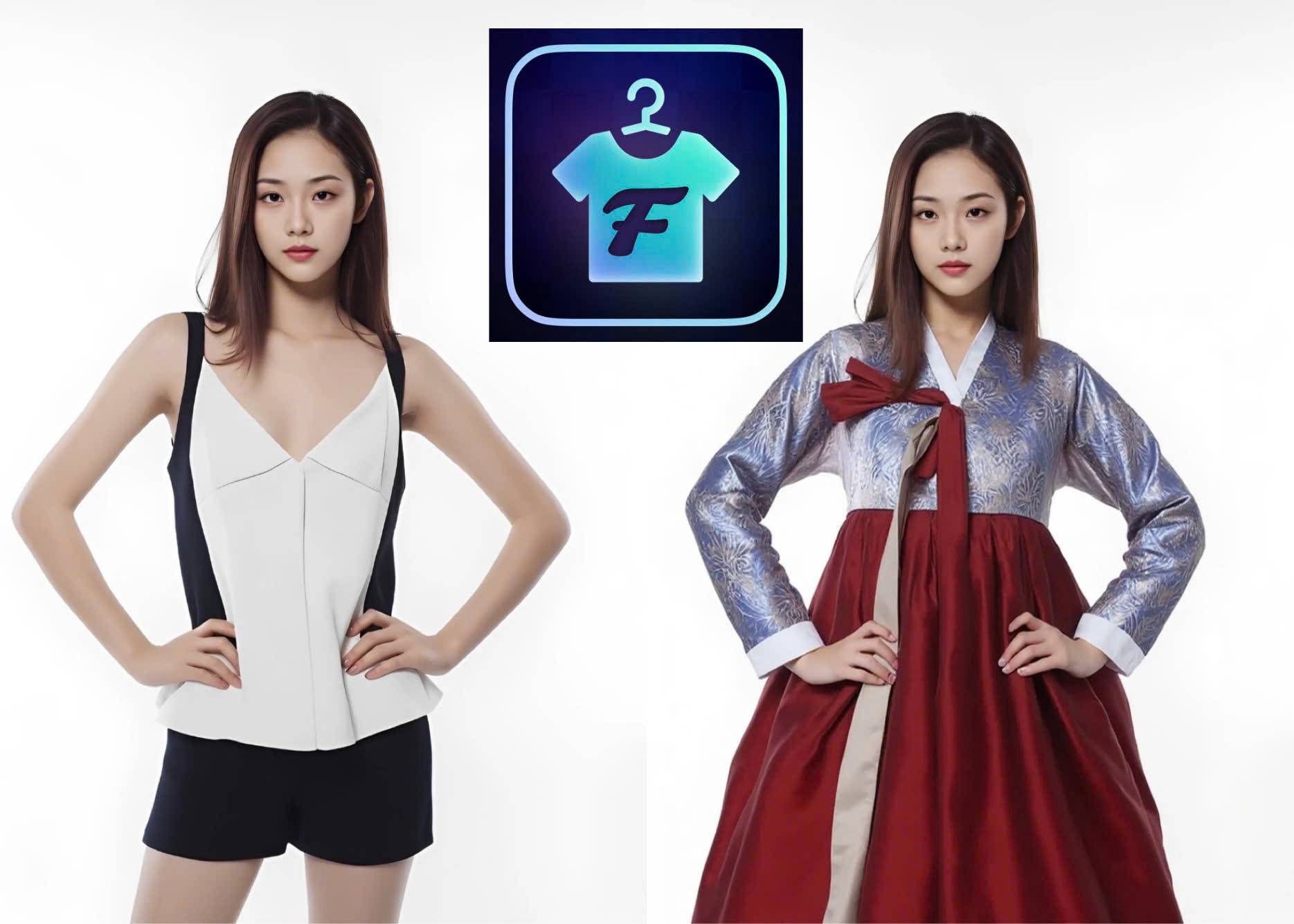
You can browse through a variety of hanbok styles in FitRoom library, from classic chima and jeogori to majestic royal attire. Or just simply upload any outfits you like onto Fitroom then select a clear, full-body or upper-body photo then watch the AI do the magic. You can impress your friends with your elegant hanbok look in just a few clicks – it’s perfect for social media and fun edits.
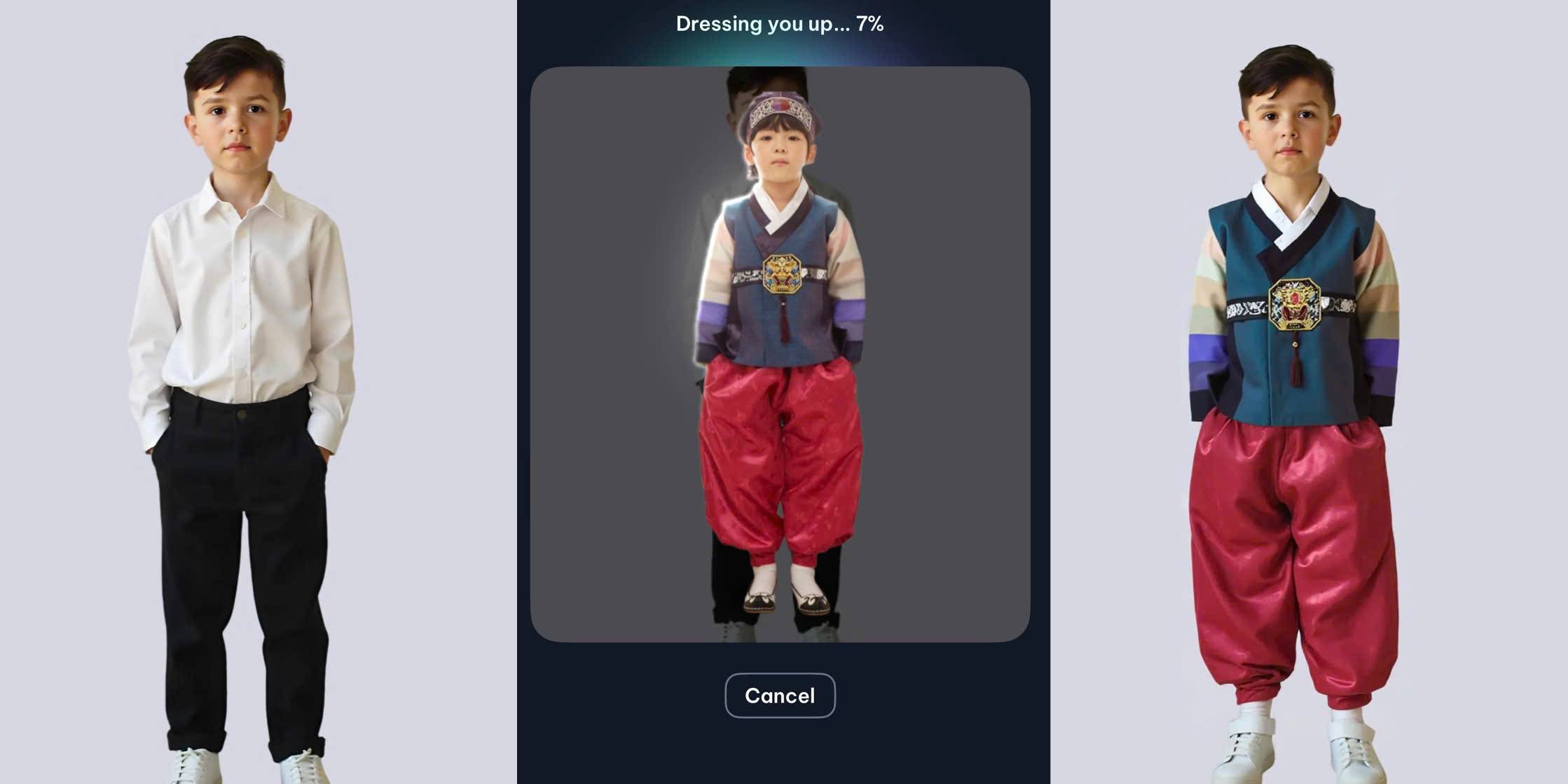
Forget about Photoshop struggles or manual editing – with FitRoom, you can seamlessly wear a stunning hanbok with just a few taps. FitRoom uses Smart Image Processing, Advanced Outfit Mapping, and Auto-Color & Lighting Adjustment technology to bring virtual try-ons to your screen.
Korean traditional clothing – a living history
Traditional Korean clothing is not just a piece of history – it’s a living, breathing part of Korean culture that continues to inspire people today. Whether worn during joyous celebrations, solemn ceremonies, or even in modern fashion reinterpretations, hanbok carries the essence of grace, dignity, and harmony that has defined Korea for centuries.
With technology like FitRoom, embracing this cultural treasure has never been easier. You don’t need a tailor, a plane ticket, or even a dressing room – just a photo and a few taps to step into the timeless beauty of hanbok. It’s a chance to connect with history, celebrate tradition, and see yourself in a new, elegant light.
Whether you’re a longtime admirer of Korean heritage or just discovering it for the first time, hanbok invites you to experience its magic. History isn’t just meant to be studied – it’s meant to be worn
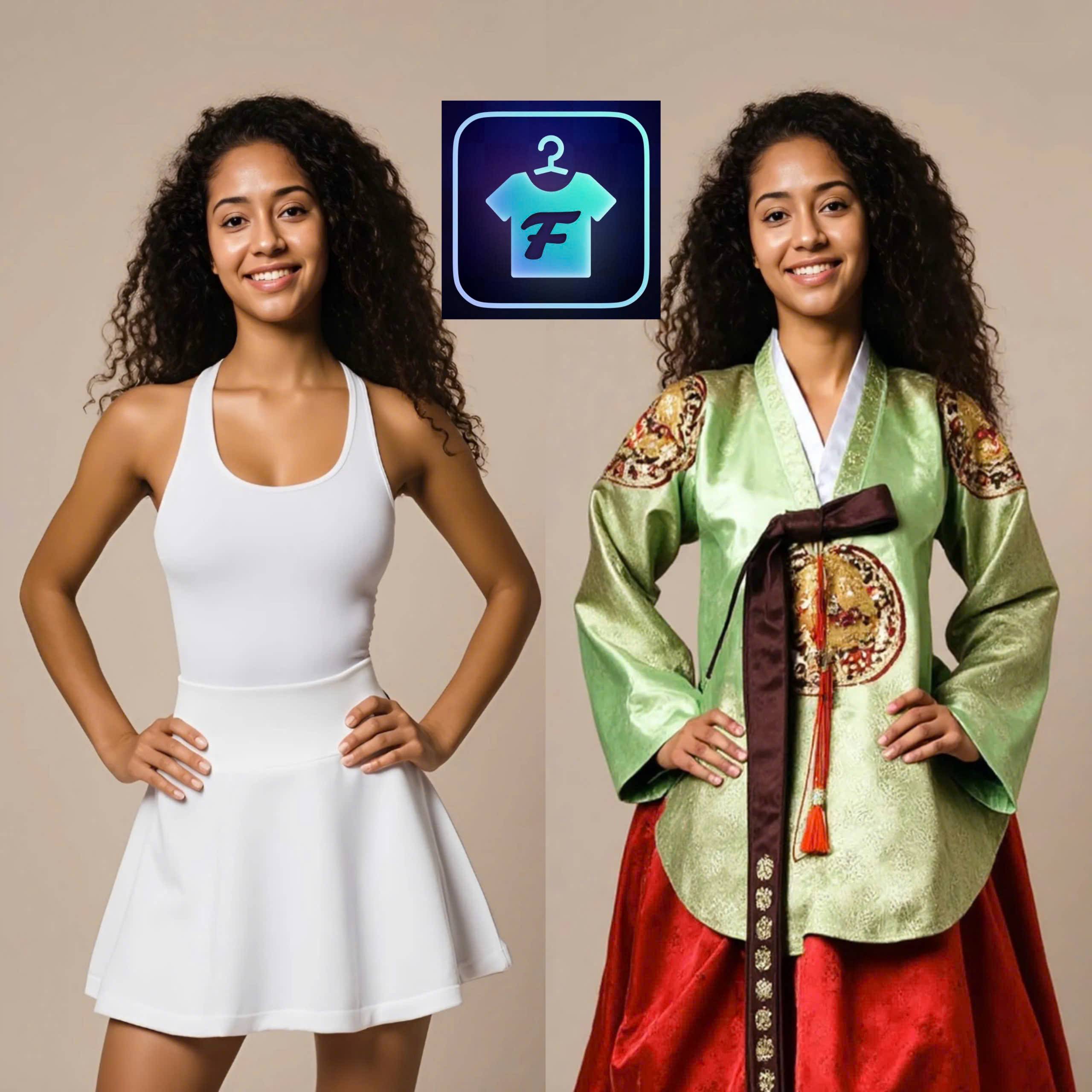
FitRoom is designed for everyone, whether you’re a K-fashion enthusiast, a history lover, or just curious about how you’d look in a hanbok. You get accurate results on the first try, without spending hours tweaking details and layers in Photoshop.


